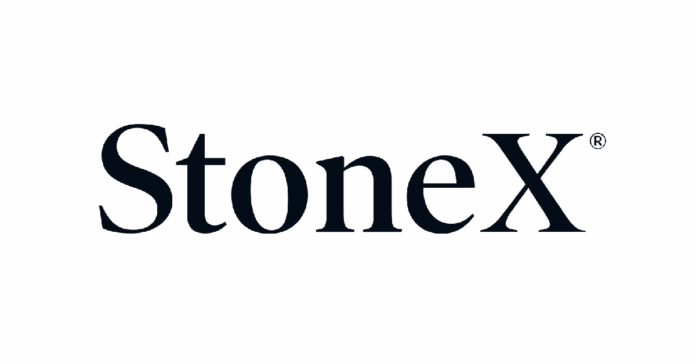RJO merger significantly boosts FCF, ROE, and market position.
StoneX Group Inc. (SNEX) acquires R.J. O’Brien, enhancing its global derivatives platform and offering significant upside at $91.38 per share. NEW YORK, June 28, 2025 – StoneX Group Inc. (NASDAQ: SNEX), a Fortune-100 financial services leader, has announced a landmark $900 million acquisition of R.J. O’Brien (RJO), the oldest futures brokerage in the United States, set to close in Q3 2025. This strategic acquisition strengthens StoneX’s position as a premier Futures Commission Merchant (FCM), expanding its global derivatives platform and reinforcing its role in the financial market ecosystem. With a compelling valuation, bolstered by synergies and a strong management outlook, StoneX presents a significant investment opportunity for those eyeing the dynamic futures market.
A Strategic Leap Forward
The acquisition, valued at $900 million in equity plus up to $143 million in assumed RJO debt, is a pivotal move for StoneX. The purchase price includes $625 million in cash, financed through new Second Lien Senior Secured Notes and a renewed revolving credit facility, and $275 million in StoneX common stock, equating to approximately 3.5 million shares. This deal enhances StoneX’s FCM leadership by adding 75,000 client accounts, nearly 300 introducing brokers (IBs), and a $6.4 billion client float, bringing its total float to over $13 billion. RJO’s 110-year legacy in futures and clearing, with $766 million in 2024 revenue and $170 million in adjusted EBITDA, aligns seamlessly with StoneX’s strengths in over-the-counter (OTC) derivatives, physical commodity trading, and fixed income products.
Sean O’Connor, StoneX’s Executive Vice-Chairman, highlighted the deal’s transformative nature: “This transaction establishes us as a leading global derivatives clearing firm, reinforcing our integral role in the global market structure across asset classes.” Gerry Corcoran, RJO’s Chairman and CEO, who will assume a senior leadership role at StoneX post-acquisition, noted, “This partnership unites two firms with complementary capabilities and a shared commitment to client service and prudent risk management.”
Financial Impact and Synergies
The acquisition is expected to be immediately accretive to StoneX’s earnings per share (EPS) and return on equity (ROE), driven by substantial revenue and cost synergies. Management projects over $50 million in annual expense synergies from streamlining back-office functions and adopting best-of-breed technology platforms, with most savings realized within 24 months. Additionally, $50 million in capital synergies will be unlocked through consolidating regulated entities. Revenue synergies are anticipated from cross-selling StoneX’s OTC hedging platform, physical commodities services, and fixed income liquidity to RJO’s diverse client base, including institutional, commercial, and retail investors.
Pro forma financials underscore the combined entity’s strength, with operating revenue expected to exceed $4.3 billion, adjusted EBITDA surpassing $750 million, and net income above $400 million, reflecting a 1%+ margin expansion. The acquisition boosts StoneX’s cleared listed derivatives volume by approximately 190 million contracts annually, capitalizing on a growing futures market fueled by global economic uncertainty and increasing retail investor participation.
Management Outlook on Recent Earnings
While specific Q2 2025 earnings details are unavailable, StoneX’s management remains optimistic about its growth trajectory. The company’s trailing twelve-month (TTM) net income as of March 31, 2025, was $295.4 million, with pro forma estimates post-acquisition projecting net income above $400 million. The April 2025 investor presentation emphasizes double-digit EPS accretion and ROE expansion, supported by StoneX’s history of over 35 successful acquisitions in the past decade. Management highlights the company’s robust balance sheet, favorable regulatory position, and global footprint across 40 exchanges, 18,000 OTC products, and 140 currencies, positioning StoneX to meet rising demand for sophisticated financial services.
Financial Metrics: ROE and Return on Tangible Assets
To evaluate StoneX’s financial efficiency, we calculate two key metrics based on TTM data as of March 31, 2025, and pro forma estimates:
- Return on Equity (ROE): Using TTM net income of $295.4 million and shareholders’ equity of $1,690 million (from SNEX_quarterly_balance-sheet.csv), ROE = ($295,400,000 / $1,690,000,000) × 100 ≈ 17.48%. Post-acquisition, with pro forma net income of $400 million and estimated equity of $1,965 million ($1,690 million + $275 million from new shares), ROE = ($400,000,000 / $1,965,000,000) × 100 ≈ 20.36%.
- Return on Tangible Assets (ROTA): Tangible assets are total assets ($25,154,300,000) minus goodwill and intangible assets ($110,600,000) = $25,043,700,000. ROTA = ($295,400,000 / $25,043,700,000) × 100 ≈ 1.18%. Post-acquisition, with total assets increasing by $6.4 billion (RJO customer assets) to $31,554,300,000, tangible assets = $31,443,700,000. ROTA = ($400,000,000 / $31,443,700,000) × 100 ≈ 1.27%.
These metrics demonstrate StoneX’s efficient capital utilization, with the acquisition enhancing both ROE and ROTA, signaling improved profitability and operational efficiency.
Valuation Analysis
Using the “Merged Master Model: Intrinsic Value Calculator for Stocks,” StoneX’s intrinsic value was recalculated to reflect the RJO acquisition, incorporating pro forma financials, synergies, and an updated share count of 52,265,820 (after issuing 3.5 million shares). The model uses Distributable Earnings for Financial Services companies, defined as Net Income + Depreciation and Amortization, as a substitute for Free Cash Flow (FCF). This substitution is critical because, for financial institutions like StoneX, traditional FCF (Net Income + Depreciation – Capital Expenditures – Changes in Working Capital) is less relevant due to high regulatory capital requirements, client float, and balance sheet-driven operations. Distributable Earnings better capture the cash available for distribution after accounting for non-cash charges, making them a suitable proxy for valuing cash-generating capacity in this sector.
- Buffett-Inspired Valuation: This method assumes a conservative 3% growth rate for 10 years, an 8% discount rate, and a 2.5% perpetual growth rate. Distributable Earnings start at $472 million (pro forma net income of $400 million + $72 million depreciation), with $25 million in expense synergies in 2026 and $50 million annually thereafter, plus $50 million in capital synergies in 2026. The use of Distributable Earnings instead of FCF accounts for StoneX’s business model, where capital expenditures are minimal ($64 million TTM) and client float dominates the balance sheet, rendering traditional FCF less indicative of value. The intrinsic value per share is $276.63, with a 25% margin of safety price of $207.47.
- McGrew Valuation: This method leverages StoneX’s historical 17.5% CAGR, capped at 15% in Year 1, declining to 6% by Year 7. Using the same Distributable Earnings and synergies, it yields an intrinsic value per share of $412.65, with a margin of safety price of $309.49. The substitution of Distributable Earnings for FCF ensures the valuation reflects the cash flows available to shareholders, adjusted for the financial sector’s unique operational dynamics.
At a corrected closing price of $91.38, both valuations classify StoneX as a “Screaming Buy,” with the stock trading 67% and 77.9% below the Buffett-Inspired and McGrew intrinsic values, respectively.
| Stock Ticker | Valuation Method | Intrinsic Value per Share | Price with 25% Margin of Safety | Last Closing Price | Valuation Status |
|---|---|---|---|---|---|
| SNEX | Buffett-Inspired | $276.63 | $207.47 | $91.38 | Screaming Buy |
| SNEX | McGrew | $412.65 | $309.49 | $91.38 | Screaming Buy |
Valuation Calculation Notes
Valuations were calculated using the Buffett-Inspired and McGrew methods from the “Merged Master Model.” Distributable Earnings (Net Income + Depreciation and Amortization) were used as a substitute for FCF, as traditional FCF is less relevant for financial institutions due to significant regulatory capital and client float, which dominate StoneX’s balance sheet. Inputs include TTM financials as of 03/31/2025 (net income: $295.4 million, depreciation: $87.9 million) and pro forma estimates post-RJO acquisition (net income: $400 million, depreciation: $72 million, shares: 52,265,820). Adjusted net debt is negative (-$4.512 billion) due to $6.4 billion in RJO customer assets treated as restricted cash. Expense synergies ($25 million in 2026, $50 million annually thereafter) and capital synergies ($50 million in 2026) were included. The Buffett-Inspired method uses a 3% growth rate, while McGrew uses a 17.5% CAGR (capped at 15% for Year 1). Assumptions include no regulatory capital increase and $50 million in revenue synergies. Limitations include unquantified integration costs and interest expenses on new debt.
Investment Outlook
StoneX’s acquisition of RJO cements its status as a global derivatives leader, leveraging complementary client bases and product offerings to drive growth. With a pre-acquisition ROE of 17.48% and ROTA of 1.18%, rising to 20.36% and 1.27% post-acquisition, StoneX demonstrates strong financial efficiency. Management’s bullish outlook, significant synergies, and a valuation indicating substantial upside make StoneX an attractive investment in the growing futures and derivatives market.
#StoneX #RJOBrien #Merger #Investing #Derivatives #Finance #StockMarket #ValueInvesting #ScreamingBuy #SNEX

